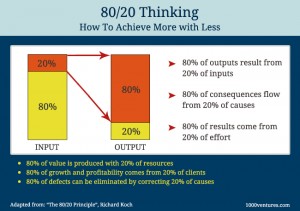 Just “good service” isn’t enough anymore. Good service simply means that you will do what you promised to do, in the way you promised to do it, and under the terms, within the time frames, and for the price that you agreed to.
Just “good service” isn’t enough anymore. Good service simply means that you will do what you promised to do, in the way you promised to do it, and under the terms, within the time frames, and for the price that you agreed to.
Besides this, the service has to provide something that’s not expected and that can be achieved through details, additional perks, things that don’t have to be pricey for the service provider but can create additional value.
The details are what makes the difference and lets the buyer know that we appreciate his trust.
Give your buyers more than they expect. If you do that, they will keep coming back. Give them what they want – and a little extra. Make them feel appreciated. Pull out the good but don’t forget to learn from your mistakes. Stand behind everything you do. Sometimes a simple apology is enough to make an awkward situation better.
One thing to keep in mind is that client satisfaction has to do with emotions rather than being based on proof and facts. Actually, both aspects are important and will affect a client’s general impression. Needless to say, that ratio of rational versus emotional depends on the type of service or product offered.
For instance, where medication is concerned, we will be more impressed by evidence that a certain type of medicine is suitable and will heal an ailment, whereas in the choice of a beauty product we will often be drawn by the appearance of its packaging or by the advertisement telling us things about it that we want to believe.

When we speak of satisfaction with any service, the vital factors are of an emotional and personal nature and require a psychological, individual approach to the clients that will satisfy their needs and, obviously, their ego.
Why is client satisfaction important?
– The client remains loyal to the company
– The client gets more attached to the company
– The client recommends the company’s products or services to others
– The client is less sensitive to price changes
Now that we have established that client satisfaction is vital in any business, how will we determine whether our clients are satisfied? Much better than engaging the services of an astrologer or spending hours brainstorming with coworkers is simply to ask them.
We can do that face to face, by phone, e-mail, or by sending questionnaires about client satisfaction. Of course, we should take care never to spam them and to always inquire whether they have time and whether they are willing to answer a few questions about how satisfied they are with a certain service received or product they have purchased.
 The best time to inquire about client satisfaction is when the client’s impressions are still fresh. A questionnaire coming long after the event will garner less precise answers, less interest from the person being asked, and there is the added risk the client might confuse us with another company.
The best time to inquire about client satisfaction is when the client’s impressions are still fresh. A questionnaire coming long after the event will garner less precise answers, less interest from the person being asked, and there is the added risk the client might confuse us with another company.
The most important aspect of doing a survey on client satisfaction is what we are going to do with the results of the survey and with the answers that we get.
The actual act of inquiring into client satisfaction has a positive psychological effect on buyers.
We are sending them the message that they are important to us, that we value their experience, opinion, and feelings.
Always be ready to accept criticism and to steer it in a positive direction.
If we inquire about our clients’ satisfaction and then do nothing to resolve any misunderstandings, fail to act upon their suggestions, or to address their dissatisfaction, we will lose credibility, our positive professional image, and the clients’ favor.

We certainly don’t want to create the impression that we are all talk and no action as politicians in election campaigns.
The 80/20 Principle
According to this principle, there is an inherent imbalance between input and output, cause and effect, effort and results. It’s a theory saying that you can achieve 80% results by putting in 20% effort. Only a few things are important, the rest are not. The Harvard Business Review showed this principle in practice:
Companies could increase their profit by at least 25% just by reducing the dissatisfaction of their clients by 5%.







































 Srpski
Srpski English
English